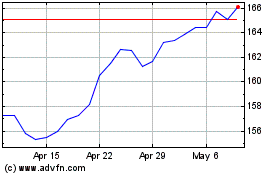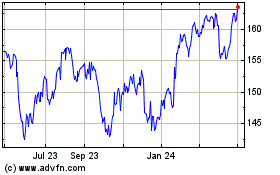The major U.S. index futures are currently pointing to a roughly
flat open on Friday, with stocks likely to show a lack of direction
after trending lower over the past several sessions.
The futures had been pointing to a lower open earlier in the
morning after Israel launched strikes against Iran, in what
appeared to be limited retaliatory action for last week’s drone and
missile barrage by Tehran.
However, negative sentiment has waned after Iranian state media
downplayed the attacks, saying explosions heard in Isfahan were a
result of the activation of Iran’s air defense systems.
The semi-official news agency Tasnim also reported the nuclear
facilities in Iran’s central Isfahan province are completely
safe.
Nonetheless, a steep drop by shares of Netflix (NASDAQ:NFLX) may
still weigh on the markets, as the streaming giant is plunging by
6.8 percent in pre-market trading.
Netflix is under pressure after reporting better than expected
first quarter results but providing disappointing revenue
guidance.
Consumer products giant Procter & Gamble (NYSE:PG) is also
seeing pre-market weakness after reporting first quarter earnings
that beat analyst estimates but weaker than expected sales.
On the other hand, shares of American Express (NYSE:AXP) are
edging higher in pre-market trading after the financial services
giant reported first quarter results that exceeded
expectations.
Overall trading activity may be somewhat subdued, however, with
a lack of major U.S. economic data likely to keep some traders on
the sidelines.
After once again failing to sustain an early upward move, stocks
came under pressure over the course of the trading session on
Thursday. The major averages pulled back well off their highs of
the session, with the Nasdaq and the S&P 500 ending the day in
negative territory.
Reflecting weakness in the tech sector, the Nasdaq slid 81.87
points or 0.5 percent to 15,601.50, while the S&P 500 dipped
11.09 points or 0.2 percent to 5,011.12. The narrower Dow bucked
the downtrend, inching up 22.07 points or 0.1 percent to
37,775.38
With the downturn on the day, the Nasdaq and the S&P 500
extended their losing streaks to five days, falling to their lowest
closing levels in almost two months.
The early strength on Wall Street partly reflected bargain
hunting, as traders looked to pick up stocks at relatively reduced
levels following recent weakness.
However, as with other recent rebound attempts, buying interest
waned over the course of the session amid ongoing concerns about
the outlook for interest rates.
Potentially adding to the interest rate worries, the
Philadelphia Federal Reserve released a report showing a
considerable acceleration in the pace of growth in regional
manufacturing activity in the month of April.
The Philly Fed said its diffusion index for current general
activity jumped to 15.5 in April from 3.2 in March, with a positive
reading indicating growth. Economists had expected the index to
edge down to 1.5.
Notably, the report also said the prices paid index surged to
23.0 in April from 3.7 in May, reaching its highest reading since
December 2023.
Quincy Krosby, Chief Global Strategist for LPL Financial, said
the spike by the prices paid index supports “the Fed’s concerns
regarding inflationary pressures stalling in its downward
trajectory.”
The Labor Department also released a report showing first-time
claims for U.S. unemployment benefits remained flat in the week
ended April 13th.
The report said initial jobless claims came in at 212,000,
unchanged from the previous week’s revised level. Economists had
expected jobless claims to rise to 215,000 from the 211,000
originally reported for the previous week.
“Jobless claims remain well below levels that would signal a
major slowdown in job growth,” said Nancy Vanden Houten, Lead U.S.
Economist at Oxford Economics.
She added, “A strong labor market gives the Federal Reserve the
room to put off rate cuts until inflation gets back on a
sustainable path to 2%.”
Meanwhile, the National Association of Realtors released a
report showing a sharp pullback by existing home sales in the U.S.
in the month March.
NAR said existing home sales plunged by 4.3 percent to an annual
rate of 4.19 million in March after surging by 9.5 percent to a
rate of 4.38 million in February. Economists had expected existing
home sales to slump to a rate of 4.20 million.
Semiconductor stocks came under pressure over the course of the
session, dragging the Philadelphia Semiconductor Index down by 1.7
percent to its lowest closing level in almost two months.
U.S.-listed shares of Taiwan Semiconductor Manufacturing
(NYSE:TSM) have tumbled by 4.9 percent even though the chipmaker
reported better than expected first quarter results.
Considerable weakness also emerged among biotechnology stocks,
with the NYSE Arca Biotechnology Index falling by 1.6 percent to
its lowest closing level in well over four months.
Software, computer hardware and oil producer stocks also moved
to the downside on the day, while significant strength remained
visible among airline stocks.
Alaska Air (NYSE:ALK) soared by 4.0 percent after reporting a
narrower than expected first quarter loss on revenues that exceeded
analyst estimates.
Procter and Gamble (NYSE:PG)
Historical Stock Chart
From Apr 2024 to May 2024

Procter and Gamble (NYSE:PG)
Historical Stock Chart
From May 2023 to May 2024
